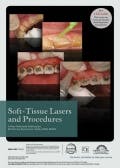3D Dentistry
by Dr. David Gane
Dr. Wisam Al-Rawi is an oral and maxillofacial radiologist and clinical assistant professor at the University of Michigan School of Dentistry. He is dedicated to maxillofacial radiology and cone beam CT interactive learning, and is developing highly interactive web-based tools for teaching cone beam CT anatomy and pathology. I recently had the opportunity to talk to Dr. Al-Rawi about his work, his views on dental radiography, and the rapid adoption of CBCT in dentistry.
Dr. David Gane
Al-Rawi: Marcilan.com is a website dedicated to teaching cone beam CT (CBCT). Back in 2005, my colleague, Bassam Hassan, and I were doing our master’s program in medical imaging at the Catholic University of Leuven in Belgium. Our supervisor, Prof. Reinhilde Jacobs, introduced the idea to create a resource to help students and practitioners learn CBCT principles and interpretation. The web was the logical media to use, as it is very accessible and can be updated easily. We initially started a simple website to teach anatomy and principles of CBCT. After moving to the University of North Carolina at Chapel Hill to do my residency program in OMR, the website content was revised, the user interface received a facelift, and a pathology module was added.
Gane:What is the biggest challenge you encounter when teaching those who are new to 3D imaging how to navigate and interpret a CBCT volume?
Dr. Wisam Al-Rawi
Gane:What are your selection criteria for CBCT use?
Al-Rawi: Different patients have different needs. There are some published guidelines for CBCT use. However, we do order a CBCT exam when we think that the information gained from the exam will impact the diagnosis and treatment planning.
Gane:Describe the process you use for reviewing and reporting on CBCT data.
Al-Rawi: Initially, we check image quality to make sure there are no motion artifacts that will interfere with reading the volume. We also check adequacy of the acquired area in the case of small and medium field-of-view scans. I start by looking at the panoramic view to get a general idea about the volume, and I use volumetric rendering to check for calcifications as they are easier to visualize. Finally, I go through the slices: axial, coronal, and sagittal. If I can see the TMJ in the scan, I use the TMJ view.
Gane:What are the most common incidental findings you see in CBCT patient data?
Al-Rawi: I find calcifications such as carotid atheromas, sialoliths, tonsiloliths, and idiopathic osteosclerosis. I also find mucous retention pseudocysts, deviation of the nasal septum, and changes in the condylar head. But sometimes I also see other benign lesions. Once my colleague saw a malignant lesion that caused narrowing of the oropharyngeal airway space unilaterally. She referred the patient to the hospital and it was diagnosed as an early malignancy. This could not have been visualized on a CBCT-generated panoramic image; hence the need to read and report the entire volume.
Gane: Tell me about how you use iPhone and iPad apps to teach radiology.
Al-Rawi: The idea came to me to use smartphones as a medium to deliver CBCT education on the go. After all, we carry our smartphones with us all the time—it’s like a computer in our pocket. With help from a friend who is a programmer, we worked together to design and implement the iCBCT Anatomy app for the iPhone/iPad. It’s cool to show your app to your colleagues, and some practitioners use the app for patient education. I teach basic and advanced radiology courses, and one of the challenges is teaching panoramic radiography, so I decided to create an app for that as well, and that’s how the “iPanoramic” app was born. One of our goals is to localize the apps into different languages so they can be used throughout the world. If someone is interested in helping with that, please contact me via email.
Gane:There has been much discussion on the potential risks of ionizing radiation. Can you explain how dose differs between a CBCT of the teeth and jaws and traditional 2D radiographic studies?
Al-Rawi: The ALARA principle should always be followed to reduce radiation risk, which is always a potential when using ionizing radiation. The level of information gained from the exam should outweigh radiation risk. There are different machines on the market, and radiation dose can vary greatly, from 15 to 800 microsieverts. The dose can also vary with traditional 2D exams depending on film speed, number of radiographs taken in case of FMS, and use of collimation.
Use of F-film speed and rectangular collimation can reduce the dose significantly compared with D-speed film and round collimation (35μSv vs. 388μSv respectively). Digital sensors can further cut the radiation dose by up to 70% compared with traditional films and also produce better image quality.
Gane:To what do you attribute the impressive growth of CBCT technologies in dentistry? In your estimation, will CBCT ever completely replace 2D dental radiography?
Al-Rawi: Implants are the main driving factor, but other specialties are driving the growth as well. I don’t believe generating CBCT will ever replace 2D for many reasons: it delivers a higher radiation dose to the patient, it takes more time to acquire and interpret the images, metallic restorations can cause artifacts, and it costs more to perform a 3D exam than a 2D exam. I see CBCT being used as an enhancement but not a total replacement for 2D radiography.
Gane: There are a large variety of CBCT systems to choose from. Do you see any trends emerging in the technology?
Al-Rawi: With more manufacturers realizing the need to have lower dose and increased image quality, I would consider buying one of the newer systems that allows multiple fields of view rather than an older machine to save money. You will be using the machine for many years, so it is worth the investment.
Gane:Reimbursement often drives the adoption of technology. Do you think that CBCT will ever reach panoramic radiograph status with respect to reimbursement?
Al-Rawi: CBCT is still relatively new compared with other imaging modalities. I think it will happen, but it may take a lot of time. It makes more sense to reimburse for a dental CBCT scan than for a medical CT scan. CBCT has a lower radiation dose than medical CT, better hard tissue resolution, the scan is less expensive, and it is more readily available. CBCT scan is more suited for our profession, but as you know, it takes time for insurance companies to realize that. I think dental specialty boards can work together to help with that.
Gane:There seems to be a strong need for CBCT education. Are there any educational requirements for doctors wishing to purchase and use CBCT technology?
Al-Rawi: Definitely—I cannot stress the need for education enough. Reading a 3D CBCT data set is not the same as looking at 2D radiographs. There is so much information, and knowing what you are looking at is crucial. I often hear doctors looking at the generated 2D pan from CBCT and there is a tendency to ignore the rest of the data set. The problem is that the generated panoramic image contains only part of the information from the data set and you might have a lesion hiding outside the selected pan region. The user has to look at the multiplanar reformatted planes (axial, coronal, and sagittal) as well as the panoramic.
There are many workshops for CBCT that tend to focus on the use of the equipment and clinical case presentation rather than reading the 3D volume. You can sit passively and learn from the PowerPoint slides, but studies in learning and thinking have shown that active learning provides better memory retention and a better overall learning experience.
Wisam Al-Rawi, BDS, MSc, MS, is a clinical assistant professor at the School of Dentistry, University of Michigan who completed his residency in oral and maxillofacial radiology at the University of North Carolina at Chapel Hill. As the developer of a website for cone beam CT education (www.marcilan.com), and iCBCT and iPanoramic apps for iPhone, iPod Touch, and iPad, Dr. Al-Rawi’s interests include interactive mobile-based education, digital imaging, and natural user interface (NUI).
Past DE Issues


